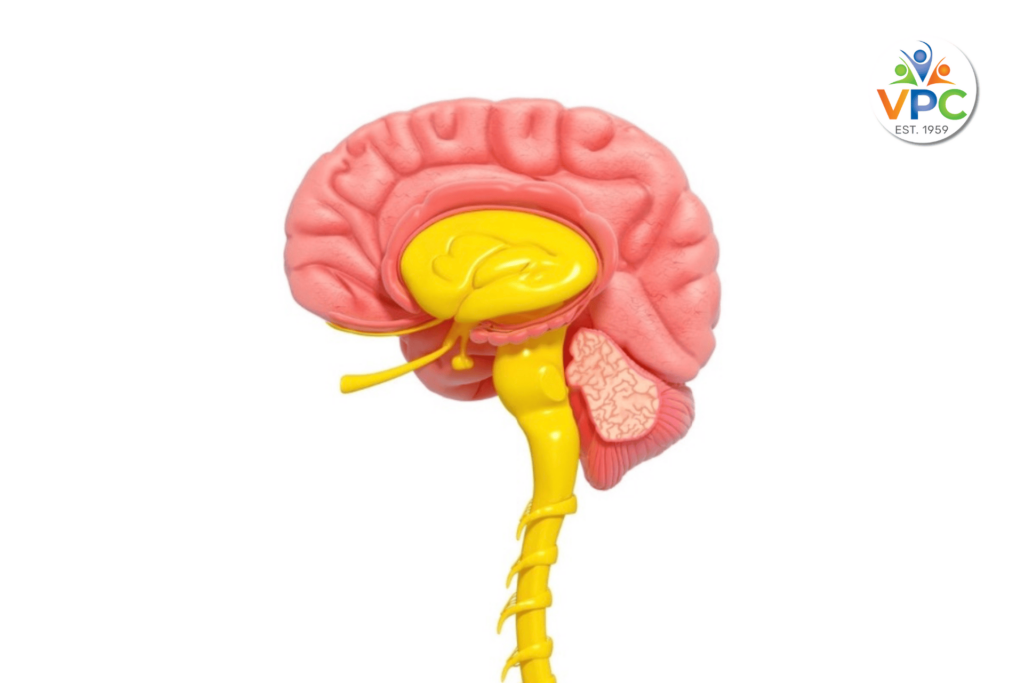
The brain in your hand model
An explanation of Dan Siegel’s hand brain model and how it helps you understand what happens when you get stressed.
The brain is an extraordinarily complex organ that sits at the head of the nervous system and controls the countless processes that keep you and your body functioning. Some of these actions and processes will occur within your awareness, like turning your head to look at a person who has called your name, and many others that will be outside of your awareness, like your digestive system working to break down food or the exchange of gases that occur in the lungs. It is not just these physical processes that your brain overseas, it is also responsible for integrating the feelings you experience from the many situations in your environment.
Dan Siegel is a well-known American paediatric psychiatrist with many published parenting books. His ‘brain in the hand model’ is a fantastic way to understand the brain’s main structures and what happens to it when you get stressed. It also provides a way to explain to children what happens to them when they have big reactions. You can also watch Dan’s explanation here.
The parts of the brain in the model
- The wrist
The first part of the model is your wrist. The wrist represents the brainstem. Your brainstem is responsible for many of your vital functions such as breathing, reproduction, blood pressure, heart rate, and sleep.
- The palm of your hand (and thumb)
Your brain then adapted and evolved the area represented by your palm and thumb (fold your thumb across your palm) called the limbic system. The nail end of your thumb is your amygdala (smoke alarm or guard dog), and the rest is the hippocampus (involved in memory).
The limbic system, also referred to as the ‘emotional brain’, is responsible for your emotions and memories and activating your stress response via the amygdala. This area plays a crucial role in how we form relationships with other people and form a secure healthy attachment to them. More specifically, the hippocampus helps us form and save new memories, linking them to specific emotions. - Four fingers
Your four fingers represent the cortex or outer layer of the brain. The cortex can be considered the ‘thinking’ part of your brain. It is the part of the brain that allows you to perform functions like reasoning, decision-making, problem-solving, and self-regulation.
Now, if you fold your fingers over your thumb, this becomes your brain with the deeper parts encased by your cortex. The very front ends of your fingers represent the prefrontal cortex, (PFRC). The PFRC, is the part of your brain that helps you evaluate a situation and decide whether it is safe or not. The amygdala (nail part of your folded thumb) will alarm with little provocation as its role is to ensure your survival. It is the job of the PFRC to stay engaged while the alarm is sounding and be able to evaluate the situation carefully. If there is no threat to life the PFRC will tell the amygdala to stand down. The PFRC is an area of the brain that takes many years to develop and mature. It is said that maturation does not occur before the age of 25. Therefore, young PFCRs are not particularly good at asking the alarming amygdala to stand down.
It is important to note that these brain parts are not separate, independently functioning parts. The brain works best when all parts interact in an integrated way.
What happens when you get stressed?
Your stress response is engaged when your amygdala, always on and scanning for danger, sounds the alarm. In a catastrophic actual threat-to-life situation, your pre-frontal cortex disengages as survival becomes the focus. Using the hand model, your fingers flip open to expose your thumb and palm. In this way, you can see that the part of your brain required to consider, organise, plan, ask questions, and listen carefully is completely off-line. In addition, the loudly ringing amygdala disrupts the hippocampus’s functioning, so memory function becomes impaired. Siegel refers to this as ‘flipping your lid’. When you ‘flip your lid’ you are in ‘fight and flight’ mode. Your nervous system effectively shouts at you to move to the nearest exit. You do not have time to think, listen, or reason, only to run or fight.
Let’s look at an example:
It is 0800 in the morning, and you have asked your 13-year-old to get out of bed and get ready for school for the third time in the past 20 minutes. The mornings have become a nightmare. It is not just school they are refusing to go to, it feels like everything you ask of them is met with a ‘no’ or a complete meltdown. You glance at the clock and feel a grip in your gut. You are not sure what is going on but now is not the time to find out because you have to get to work and need to be out of the house in under 10 minutes. You feel like you are about to lose it.
Let’s stop here. This scenario could go in various directions, depending on what else might be adding to the stress for the parent and teen and how long and how much stress has been present.
To demonstrate the impact of stress on your brain, let’s first look at your hand model. Lift your four fingers so they no longer touch the rest of your hand. This action represents the way your PFRC disengages itself from the rest of your brain. The fight for survival response that is going on in your body does not look for a clear and thoughtful response. It is looking for the nearest exit out. Instead of being able to listen to what is being said, be curious, seek to understand and offer support to your teen, your brain will scramble around to find a solution as quickly as possible. This situation is more difficult because your teen’s brain is doing the same thing. Their brain will be looking for a way to resolve the stress and if they do not have something already learned in their minds, they will create one now with you. The result may be a full-blown tantrum, telling you clearly to leave the room or they may completely shut down and disengage from any talk.
In situations of high stress, your brain will look for the most energy-saving option to resolve the stress, so it will choose an action used in a previous experience that felt like this over the effort involved in creating a whole new behaviour. The problem with this option is that now is a new and different situation, and now requires a different type of thinking.
Keeping your fingers engaged and the ‘lid’ on.
Take a moment to look at your hand, with your fingers resting over your thumb, which lies across your palm. This represents your brain when it is in a calm and emotionally regulated state. All the parts of the brain are connected and working together in harmony.
Using the hand model, allow your fingers to hover slightly above your thumb. Not too far away. Translated to the example above, this is the feeling you would have as you storm down the hallway to yell at your teen to get in the car, but don’t because in that same moment, you realise, from previous experience, that this doesn’t end well. You use the knowledge that you already have about what doesn’t work as your touchstone for doing something different. You still feel like you will lose ‘it’ but you don’t. You will still be experiencing a lot of intense feelings and thoughts. However, this time, your PFRC is staying in touch with the rest of your brain. It is staying connected, which will offer you the opportunity to do something different.
Feeling stressed and keeping your ‘lid on’ during a stressful event is hard. It takes energy and effort to evaluate a situation that feels stressful, understand that it is not catastrophic and respond in a way that resolves the stress and produces a new and better strategy. When you can experience the feeling of being stressed without ‘flipping your lid’, you provide the conditions your brain needs to remain connected to all its parts. This brain is ready to adapt, learn, and evolve. Young people need help regulating their emotions because it is a learned skill. When a situation involving your child feels stressful, know that you are on the edge of the conditions your brain needs to move forward and learn something new. When you can calm the stressful situation down without exploding, avoiding or shutting it down, you teach your child something new about what can happen when they experience intense emotions.
Katrina Gow
Katrina is a dedicated parent and qualified counsellor and psychotherapist with a passion for supporting families through challenging times. Katrina combines her diverse background in nursing, occupational health, and Shiatsu massage to offer a unique and holistic approach to her work. She is a committed practitioner of Iyengar yoga, and deeply comprehends the profound connection between mind and body, recognising the significance of balance in sustaining overall health.
Katrina is fascinated with the human condition and has a particular interest in exploring the complex subject of stress and its interwoven effects on our feelings, thoughts and behaviours. Katrina has niche experience in the area of school avoidance and she now seeks to help parents dealing with the enormous stress that invariably accompanies having a child unable to attend school.
Katrina works at the Melbourne Children’s Clinic in Surrey Hills.

